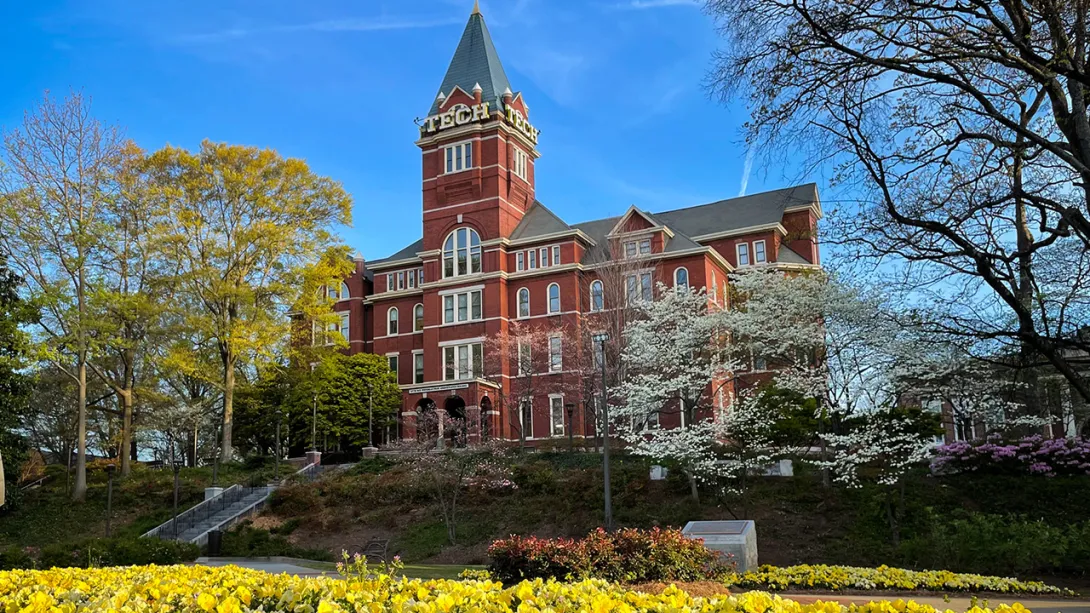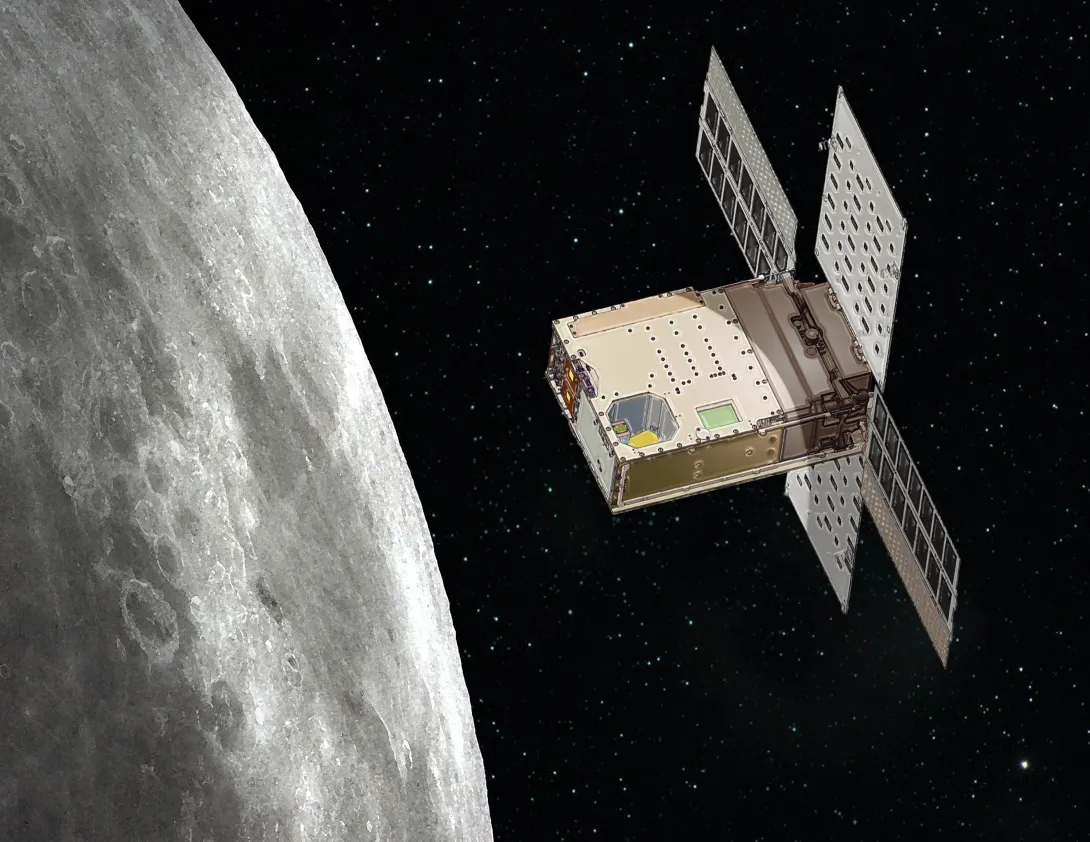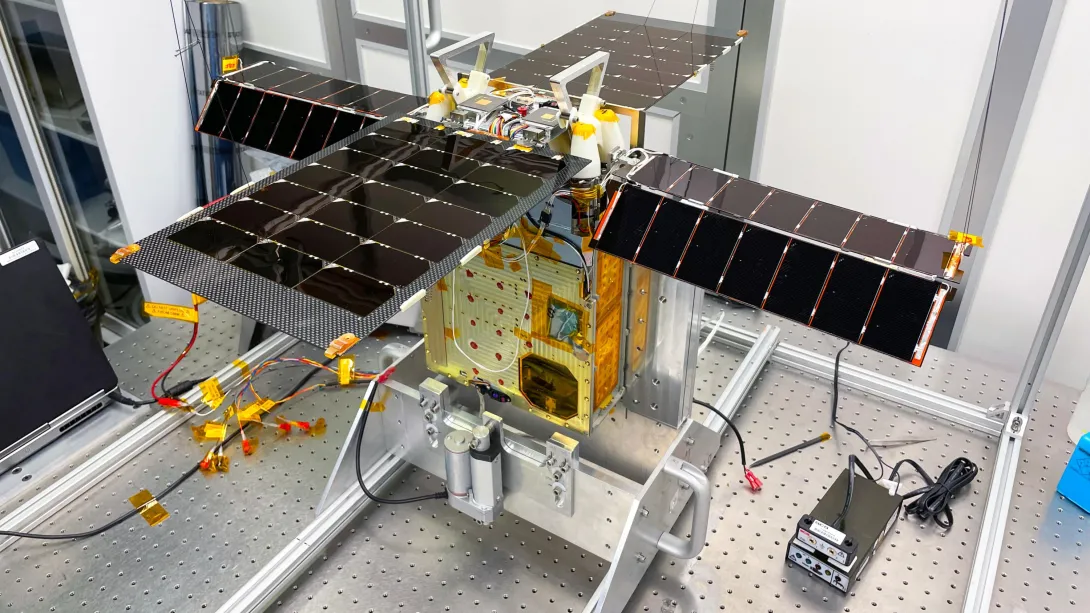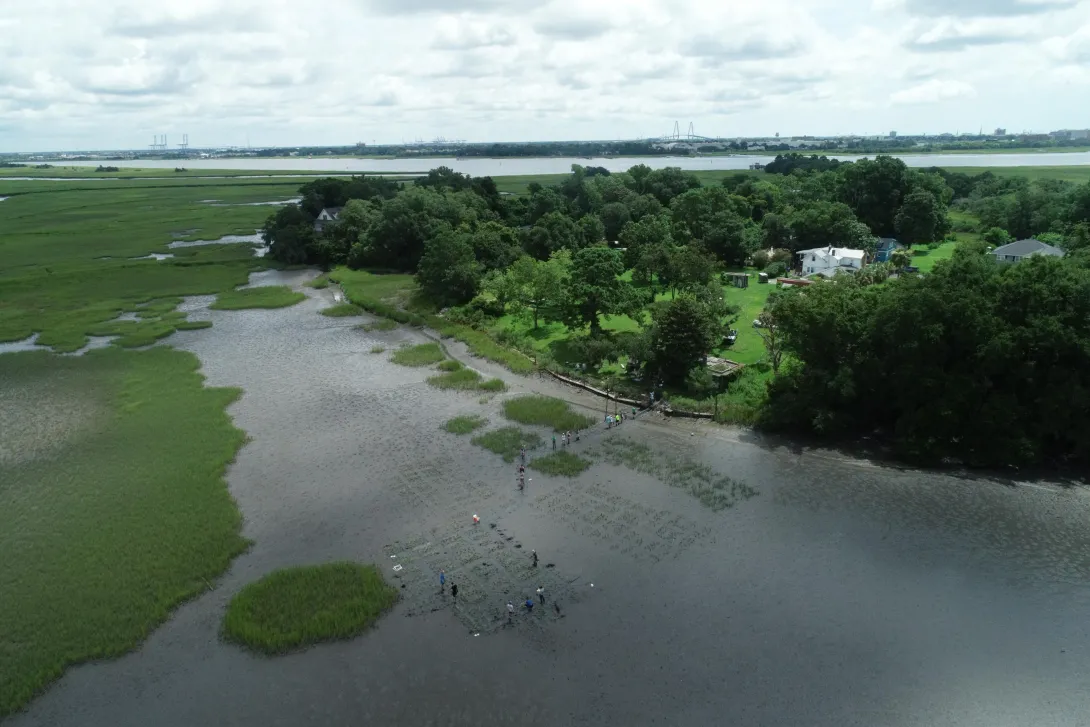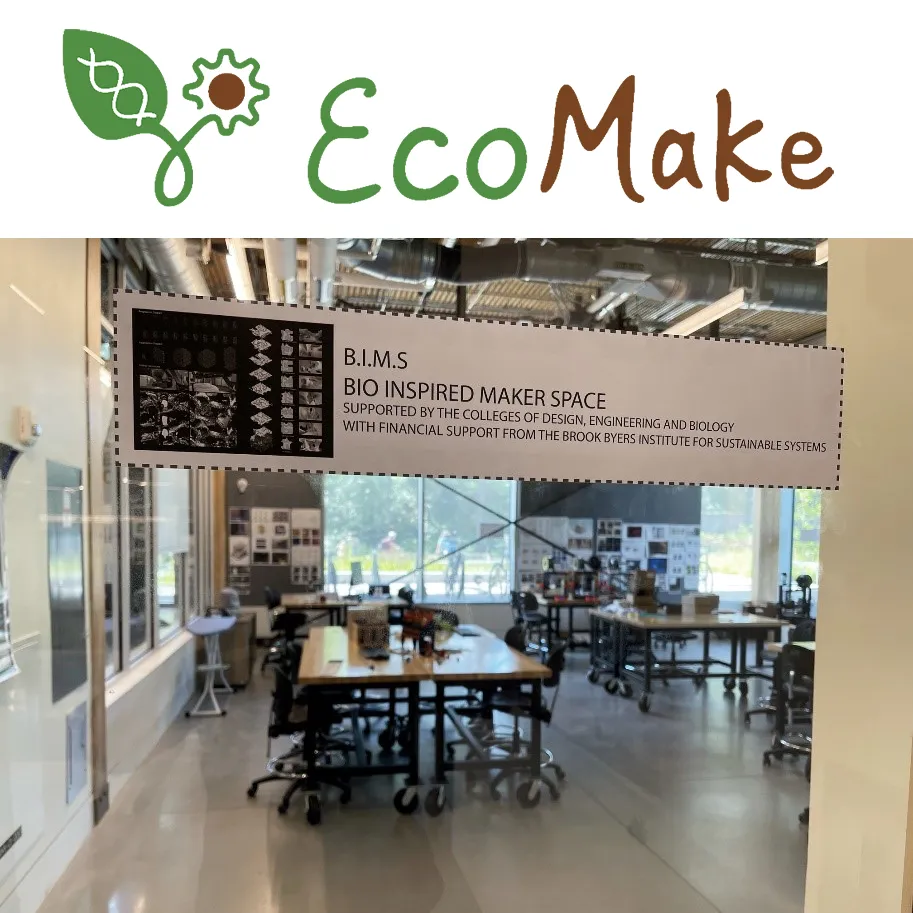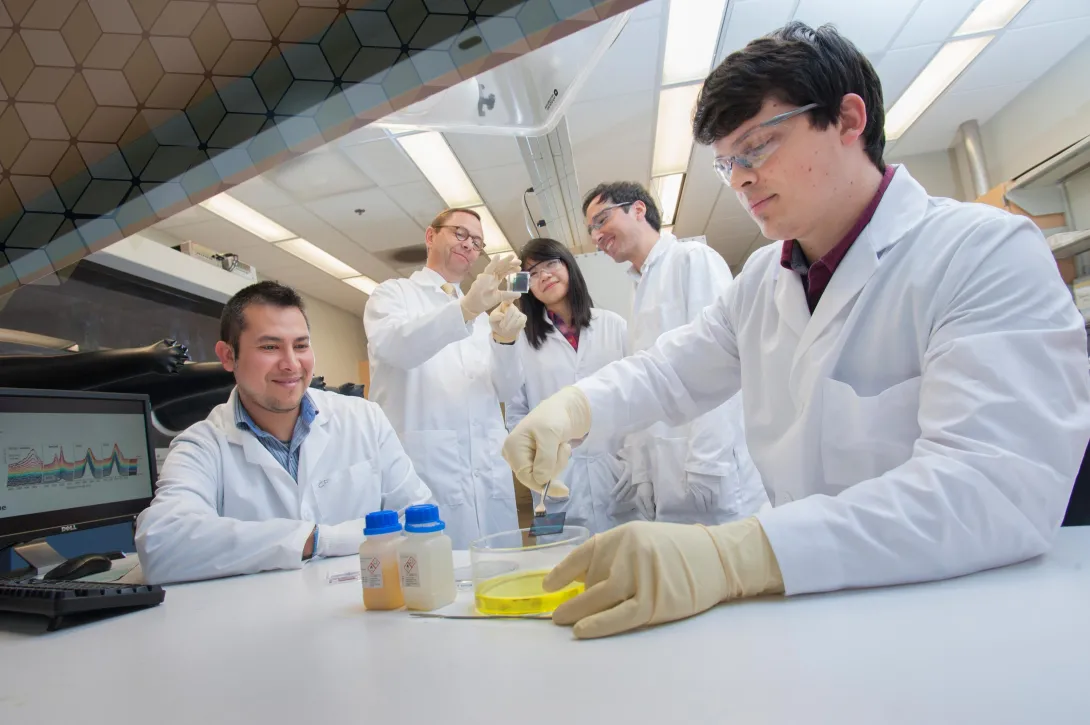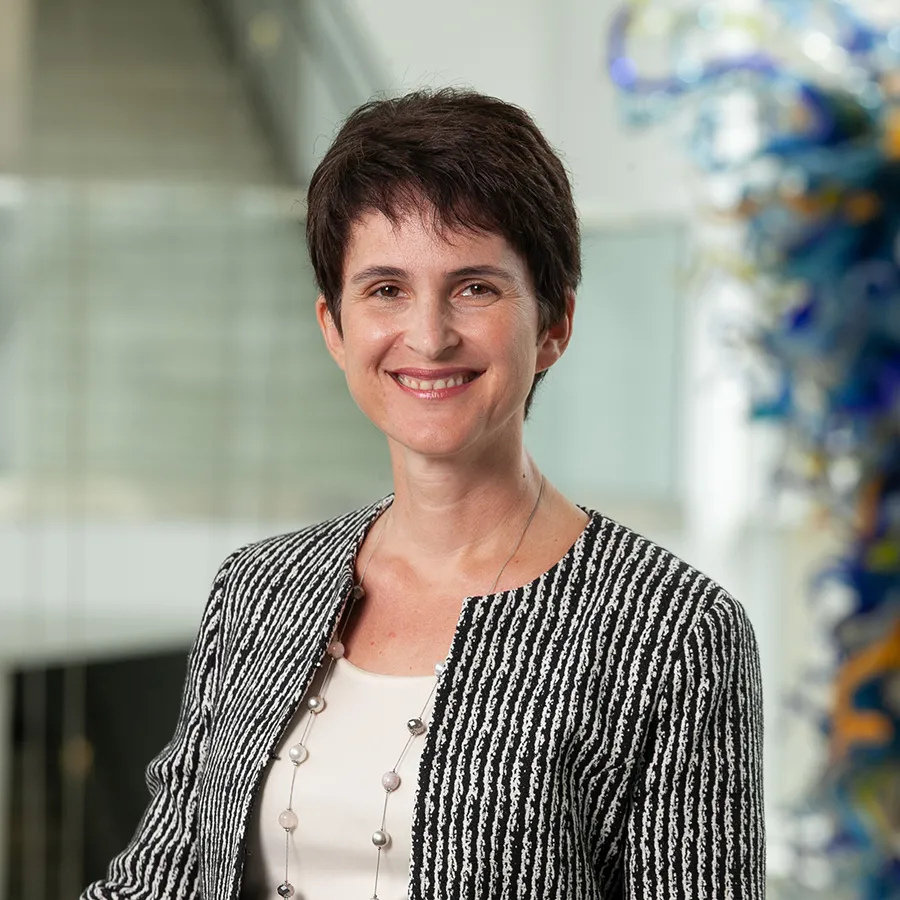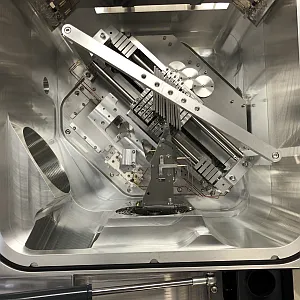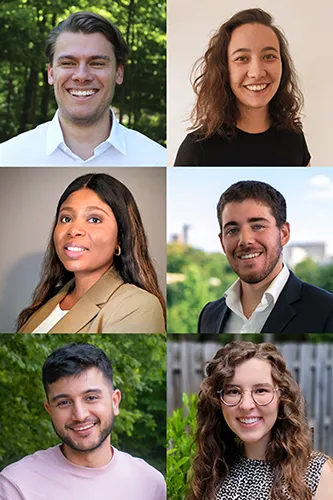Jan. 26, 2023
Three Georgia Tech projects will receive more than $4.7 million in direct Congressional funds to support efforts across the State of Georgia to enhance STEM education, serve underrepresented businesses, and advance hydrogen research. These initiatives were included in the $1.7 trillion fiscal year 2023 Omnibus Appropriations bill that was signed into law on December 29, 2022.
“We are very grateful for the strong support Georgia Tech received from Senator Warnock, Senator Ossoff, Congressman David Scott and Congressman Carter,” said Ángel Cabrera, president of Georgia Tech. “These Congressionally directed funds are a critical investment in the wide-ranging work happening at Georgia Tech as we address some of the most important education and economic development needs of our nation and state.”
Engaging Children of Military Families in Robotics and Invention Based STEM Competitions
Georgia Tech’s Center for Education Integrating Science, Mathematics, and Computing (CEISMC) will receive $215,000 from the Department of Education to enhance STEM education in local school districts serving military families in southeast Georgia. Submitted by Congressman Carter, Senator Ossoff and Senator Warnock, this project will provide school-aged children with early exposure to areas in STEM such as robotics, engineering, and entrepreneurship, as well as offer unique opportunities and training in CEISMC’s areas of expertise.
"CEISMC is thrilled to be able to bring innovative and exciting STEM programming to military families in Congressional District 1. By engaging children in robotics, invention, and coding, addressed at providing solutions to real world problems, we hope to support the next generation of scientists, researchers, and engineers,” said Lizanne DeStefano, Executive Director of CEISMC.
This project will be led by CEISMC’s team at Georgia Tech’s campus in Savannah, Georgia, in partnership with schools on the following military bases: Moody Airforce Base, Kings Bay Naval Submarine Base, Fort Stewart, and Hunter Army Airfield.
Growing Underrepresented Companies in Manufacturing, Logistics, Warehousing, and Transportation
The Enterprise Innovation Institute at Georgia Tech will receive $495,547 to launch an outreach, educational, and technical assistance program that will connect and serve small to midsize businesses of these four sectors located within Georgia’s 13th Congressional District. Supported by Congressman David Scott, this project will provide underrepresented companies with opportunities for expansion through connections made with corporate and governmental entities, as well as essential tools and services to improve business operations and address workforce needs.
"We appreciate the support and commitment from Congressman Scott to help minority-owned businesses in his district," said Donna Ennis, Director of Diversity Engagement and Program Development at Georgia Tech's Enterprise Innovation Institute. "This effort will help bring much needed strategic resources to further improve their operations and increase access to financing and greater opportunities."
Georgia Hydrogen Testing Consortium
The Strategic Energy Institute will receive $4,000,000 to develop the safety, gas handling and logistics infrastructure to support Georgia Tech’s efforts in the growing hydrogen economy. Submitted by Congressman Carter, Senator Ossoff and Senator Warnock, the center will enable cutting edge research to advance hydrogen utilization, technology development in collaboration with companies invested in this area, as well as offer professional education and workforce development resources through Clark Atlanta University.
“These funds will enable us to substantially expand our infrastructure for handling hydrogen and hydrogen carriers, such as ammonia and sustainable aviation fuels,” said Tim Lieuwen, Executive Director of the Strategic Energy Institute. “These will allow us to further build upon the great partnerships we have developed over the last two decades with key technology developers and the federal government in basic science, technology development and testing of high efficiency, clean energy and propulsion systems.”
News Contact
Contact the Federal Relations Team
Jan. 25, 2023
Maryam Saeedifard has been named a Distinguished Lecturer (DL) of the IEEE Power Electronics Society (PELS). Saeedifard has been a faculty member of the Georgia Tech School of Electrical and Computer Engineering (ECE) since 2014 and holds a Dean’s Professorship bestowed by Tech’s College of Engineering.
Each year, PELS selects distinguished society members as DLs to celebrate and honor their high achievements in the field of power electronics, as well as to support PELS chapter activities by providing high-profile speakers for local chapter/section events.
Saeedifard is a leading expert on power electronics for energy conversion systems. In 2022 she was named an IEEE Fellow and was a recipient of the Nagamori Award. During her career, she has developed modular and scalable power conversion circuits for medium-and high-voltage application.
She has served on the technical program committees of the IEEE Power Electronics Society, IEEE Applied Power Electronics Conference and Exposition (APEC), and IEEE Industrial Electronics Conference (IECON). Saeedifard is also a Co-Editor-in-Chief of the IEEE Trans. on Power Electronics.
News Contact
Dan Watson
dwatson@ece.gatech.edu
Jan. 09, 2023
A small spacecraft assembled and tested at the Georgia Institute of Technology is on its way to the moon, where it will use lasers to search for surface water ice in lunar craters that are never warmed by light from the sun.
The briefcase-sized Lunar Flashlight will be monitored and controlled over the next several months by a team of graduate and undergraduate students in Georgia Tech’s School of Aerospace Engineering. The team will keep the spacecraft on track and capture the data it gathers to be studied by the Lunar Flashlight Science team.
Watch a video on the Lunar Flashlight mission on YouTube
The spacecraft launched at 2:38 a.m. December 11 on a SpaceX Falcon 9 rocket that also carried a Japanese-built lunar lander and a United Arab Emirates rover. Shortly after launch, Lunar Flashlight separated from the Falcon 9 to begin an approximately three-month journey that will carry it into a fuel-conserving orbital trajectory 42,000 miles beyond the moon. Gravity from the moon, Earth, and Sun will ultimately bring it into a path that will come within nine miles of the lunar surface.
Once in its science orbit around the moon, Lunar Flashlight will shine four lasers into perpetually-dark craters near the lunar South Pole. Each laser operates at a slightly different frequency, and the reflected light acts like a spectral fingerprint that identifies the material that it illuminated. If ice is there, the near-infrared light from the lasers will be absorbed by the water. If the light reflects back to the Lunar Flashlight, that will indicate the absence of ice. Data from the spacecraft will be radioed to NASA’s Deep Space Network and received by student controllers on the Georgia Tech campus, who will then share it with the Lunar Flashlight Science Team.
Surface water ice may be a treasure trove of water from different sources such as volcanic outgassing and meteorite impact, so knowing where it resides will help point future assets to examine it at the surface. If sufficient amounts exist, the precious liquid may be used to help meet the drinking water needs of future lunar colonies. Water molecules from potential ice reservoirs in the South Pole craters could also be split to provide a source of oxygen for breathing and hydrogen for rocket fuel.
Big Capabilities in a Small Spacecraft
Despite its small size, Lunar Flashlight – which was designed by NASA’s Jet Propulsion Laboratory – has big capabilities. Lunar Flashlight carries a propulsion system that will be used to make mid-course corrections and allow the spacecraft to get into lunar orbit and accomplish its mission. Built at Georgia Tech’s School of Aerospace Engineering, the propulsion system uses a new monopropellant developed at the Air Force Research Laboratory to be more environmentally safe than earlier propellants.
“It’s a very capable spacecraft for sure,” said Jud Ready, a Georgia Tech Research Institute (GTRI) principal research engineer who served as principal investigator for the final assembly and testing of Lunar Flashlight at Georgia Tech. “Achieving lunar orbit insertion can be challenging for a conventional spacecraft, let alone a vehicle the size of a desktop computer.”
The solar-powered Lunar Flashlight is part of a new generation of small spacecraft with capabilities formerly seen only on larger vehicles. First used in low earth orbit, the smaller vehicles are now traveling to the moon, and potentially to other planets in the solar system.
“Space exploration was formerly the realm of major governments – the United States, Russia, China, Japan, and a few others,” said Ready. “Using smaller spacecraft like Lunar Flashlight means a lot more opportunity for this. There will likely be thousands of other small spacecraft launching behind us.”
A Learning Experience for GTRI and Georgia Tech
Final assembly of the Lunar Flashlight took place in a cleanroom in a GTRI building on the main Atlanta campus, where the laser system also was tested. Specialized equipment at GTRI’s Cobb County Research Facility tested the spacecraft’s radio equipment and simulated the stresses of launch. Thermal, vacuum, and other testing took place in Georgia Tech’s School of Aerospace Engineering.
For the faculty, staff, and students involved, Lunar Flashlight has provided a great learning experience.
“We learned how to apply NASA’s rigorous protocols to everything we did, protect the spacecraft from electrostatic discharge, schedule complex testing tasks, and utilize our student researchers who must also maintain their schoolwork and take exams,” Ready said. “There have been some real sacrifices by a lot of folks who worked long and odd hours.”
After completion of the final assembly and testing at Georgia Tech, Lunar Flashlight traveled to the Marshall Space Flight Center in Huntsville, Alabama, for fueling and additional testing. Finally, it made the trip to the Cape Canaveral Space Force Station in Florida for integration onto the SpaceX rocket.
Ready is hopeful that if Lunar Flashlight finds evidence of significant ice deposits on the moon’s South Pole, the precious water will help set the stage for creating a permanent human presence there.
“It’s really disappointing that we went to the moon in the 1970s, but didn’t stay there,” he said. “However, when you look at the big scheme of things, exploration is often measured in hundreds or even thousands of years. So, it’s not surprising that colonization of the moon would take longer than a few decades.”
Writer: John Toon (john.toon@gtri.gatech.edu).
GTRI Communications
Georgia Tech Research Institute
Atlanta, Georgia USA
About GTRI: The Georgia Tech Research Institute (GTRI) is the nonprofit, applied research division of the Georgia Institute of Technology (Georgia Tech). Founded in 1934 as the Engineering Experiment Station, GTRI has grown to more than 2,800 employees, supporting eight laboratories in over 20 locations around the country and performing more than $700 million of problem-solving research annually for government and industry. GTRI's renowned researchers combine science, engineering, economics, policy, and technical expertise to solve complex problems for the U.S. federal government, the state, and industry. For more information, please visit www.gtri.gatech.edu.
News Contact
(Interim) Director of Communications
Michelle Gowdy
Michelle.Gowdy@gtri.gatech.edu
404-407-8060
Dec. 06, 2022
For marine scientist, climate activist, and Tech alumnus Albert George (MS HSTS 2009), the fight against climate change is also a fight for home.
Now, what started as a citizen science initiative led by George has turned into a $2.6 million National Fish and Wildlife Association effort to restore degraded salt marshes in Charleston, South Carolina. As part of the project, Joel Kostka, professor and associate chair of Research in the School of Biological Sciences, will lead a team of researchers to not only monitor these restoration efforts, but gain insights into why the marshes degraded in the first place — and how to prevent it from happening in the future.
Over the past three years, Kostka, who has a joint appointment in the School of Earth and Atmospheric Sciences, has worked with SCDNR and Robinson Design Engineers, a local firm co-led by Tech alum Joshua Robinson (CEE 2005), to develop engineering and design plans for the restoration of the salt marshes.
“That project went really well,” shared Kostka, “and now we have developed engineering and design plans for the actual restoration as we are moving forward with the next phase.”
Work for the current phase of the project is set to begin soon. Over the next four years, community volunteers will work to plant marsh grasses, restore oyster reefs, and excavate the tidal creeks that supply the marsh with sea water.
“Because if we don't do this work,” George shared, “then basically it means a place that I grew up in and a place that I call home will no longer exist.”
News Contact
Writer:
Audra Davidson, College of Sciences
Editor and Contact:
Jess Hunt-Ralston
Director of Communications
College of Sciences at Georgia Tech
Oct. 17, 2022
At first glance, the new maker space opening in the Kendeda Living Building for Innovative Sustainable Design might look like many others. However, the space, named EcoMake, has some important differences. Because it is housed in the Kendeda Building, there are strict standards for what types of materials and equipment can be used there in order to maintain its Living Building Certification. For example, you will find several 3-D printers there, like almost all maker spaces, but the plastic filament used in them is made from recycled plastic, perhaps recycled on-site with equipment in the lab itself.
Some might regard such restrictions as too limiting to their creativity or design goals. Viewed another way, this approach opens up a unique set of possibilities. Biologically Inspired and Green Design (BIG-D) is a field of study (sometimes referred to by different names, like “biomimicry”) that has demonstrated a lot of promise in the past few decades. This approach aims to translate the billions of years of knowledge and design wisdom embodied in our biological world into innovative green products. However, no matter how green the design of a product, they are often manufactured with traditional processes with limited consideration for energy, toxicity, water, or material use. Having a lab like EcoMake will help to usher in the field of study of Biologically Inspired and Green Manufacturing (BIG-M). BIG-M will require knowledge, equipment, and resources that are much different than traditional fabrication methods. Like natural systems, this new facility will operate within the means of nature, using no more energy or water than can be generated from its geometric footprint, and producing no more waste than it can assimilate on site.
EcoMake has the following tools and equipment (so far):
- 8 - Prusa I3S+ 3-D Printers
- 5 - Ender 3 Pro 3-D Printers
- EinScan-SP 3-D Object Scanner
- Mark-10 ESM303 Mechanical Tester
- 300-X Digital Microscope
- 3Devo Filament Extruder
- Shini SG-16N Plastic Granulator
- Plastic Chip Dryer
- Singer Heavy Duty 4423 Sewing Machine
- Complement of Standard Fabric Crafting Equipment
EcoMake, the bio-inspired maker space will be open to students from all disciplines. It is supported by the Colleges of Design, Engineering, and Biology, and the Brook Byers Institute for Sustainable Systems. Contact Michael Gamble for more information.
News Contact
Brent Verrill, Research Communications Program Manager, BBISS
Sep. 27, 2022
The Scalable Asymmetric Lifecycle Engagement Microelectronics Workforce Development program (SCALE) has announced the program will extend another five years and expand with $10.8 million additional Department of Defense (DoD) funding, with a ceiling of $99 million.
SCALE officials said this expansion of the nation’s preeminent program will further its goal to develop a next-generation workforce that can return the United States to prominence in global microelectronics manufacturing.
Georgia Tech participates in the partnership, which is led by Purdue University and managed by NSWC Crane. SCALE facilitates the training of highly skilled U.S. microelectronics engineers, hardware designers and manufacturing experts. SCALE brings together a public-private-academic partnership of 17 universities and 34 partners within the defense industry and government.
“This is an extremely exciting time in the country and at Tech for microchip design and manufacturing,” said Arijit Raychowdhury, the Steve W. Chaddick School Chair of Tech’s School of Electrical and Computer Engineering (ECE). “These newly announced funds for the SCALE program will help Georgia Tech recruit a new, diverse group of students ready to work in defense microelectronics. We’re thrilled to be a SCALE partner university and honored to be leading many of the project’s specialty areas.”
SCALE provides unique courses, mentoring, internship matching and targeted research projects for college students interested in five microelectronics specialty areas. Georgia Tech ECE faculty members will be the primary investigators for three of the areas:
- system on a chip will be led by Raychowdhury;
- radiation-hardening will be led by John Cressler;
- and heterogeneous integration/advanced packaging will be led by Madhavan Swaminathan.
The other two focus areas are embedded system security/trusted AI and supply chain awareness.
Industry and government partners regularly meet and update a list of knowledge, skills, and abilities important for new entrants to the workforce. The SCALE universities then update their curriculum to ensure the students are prepared for upcoming needs in the rapidly advancing microelectronics field.
Peter Bermel, SCALE director and the Elmore Associate Professor of Electrical and Computer Engineering at Purdue, said the United States will need 50,000 trained semiconductor engineers to meet overwhelming and rapidly growing demand.
“The United States is committed to expanding and strengthening its semiconductor industry and workforce rapidly over the next five years,” Bermel said. “SCALE takes a holistic approach to the microelectronics workforce gap by comprehensively addressing system challenges for workforce training and recruiting.”
Goals for the next five years include:
- Expanding student participation in SCALE fivefold to more than 1,000.
- Developing learning models for K-12 classrooms.
- Collaborating with community colleges nationwide to develop microelectronics classes.
The demand for microelectronics increased by 26.2% in 2021. But while the United States consumes about half of the chips produced worldwide, the country only manufactures about 12%, highlighting the pressing need for the U.S. to strengthen its domestic semiconductor supply chains and increase industrial capacity.
The funding announcement is the latest highlight in Georgia Tech’s leadership role in bolstering microelectronics and workforce development. Tech’s large engineering and science faculty bring a broad set of research expertise to strengthen the country’s semiconductor capacity. The Institute is uniquely positioned to train the microelectronics workforce, drive future microelectronics advances, and provide fabrication and packaging facilities for industry, academic and government partners to develop and test new solutions.
###
The Georgia Institute of Technology, or Georgia Tech, is a top 10 public research university developing leaders who advance technology and improve the human condition. The Institute offers business, computing, design, engineering, liberal arts, and sciences degrees. Its nearly 44,000 students, representing 50 states and 149 countries, study at the main campus in Atlanta, at campuses in France and China, and through distance and online learning. As a leading technological university, Georgia Tech is an engine of economic development for Georgia, the Southeast, and the nation, conducting more than $1 billion in research annually for government, industry, and society.
News Contact
Dan Watson
dwatson@ece.gatech.edu
Sep. 01, 2022
I am excited to step into the interim executive director position at the Brook Byers Institute for Sustainable Systems, with sincere gratitude to John for his pioneering leadership, to the Brook Byers Professors and Faculty Fellows for their high-profile contributions to sustainability research and education, and to Mr. Byers for his generous support of BBISS over the years.
I am also delighted to have the opportunity to work with a very committed team in Mike, Susan, Gay, and Brent, whose combined tenure with BBISS adds up to more than 40 years, not to mention Mike and Brent’s early involvement with defining Georgia Tech’s role in sustainability going back to the late 90s! I invite you all to engage with us over the next year: a small step is to sign up for the BBISS newsletter.
Some colleagues will remember that I had an office at ISTD, BBISS’ precursor, when I was on sabbatical at Georgia Tech from INSEAD about 20 years ago. I was introduced to the campus sustainability community by former executive directors and mentors Carol Carmichael and Bert Bras. When I moved to the Georgia Tech Scheller College of Business in 2005, I was excited to become part of this sustainability community, with whom I have since had many productive and enjoyable collaborations leading to the creation of the Ray C. Anderson Center for Sustainable Business, Serve-Learn-Sustain, the Carbon Reduction Challenge, and more. Rejoining BBISS on its leadership team is bringing things full circle for me and feels a bit like a homecoming.
Over the last year, I have had the privilege of working as co-chair of Sustainability Next, the Georgia Tech Strategic Plan 2020-2030 Implementation Task Force tasked with developing an Institute-wide implementation plan for sustainability cutting across all core missions of Georgia Tech and encompassing both environmental and social sustainability issues defined by UN Sustainable Development Goals. Many of you contributed through the task force, surveys, townhalls, and individual conversations, for which I am grateful. Through this work, I have come to appreciate not only the depth of the sustainability expertise at Georgia Tech but also the unique point at which we find ourselves in terms of the opportunity to have transformative impact in our city, region, nation, and globe.
Assets that collectively provide that opportunity include: the cutting-edge Georgia Tech sustainability research community spanning all six colleges and GTRI; successful sister IRIs, centers, and initiatives; a commitment to campus sustainability exemplified in flagship projects like the Kendeda Building; a student base that is eager to have positive societal impact in their careers; many strong industry partnerships including the Drawdown Georgia Business Compact focused on climate action; federal government and philanthropic dollars poised to invest in climate solutions with an emphasis on social justice; a state government working to bring “new economy” companies into Georgia; many city- and county-level sustainability and climate initiatives; GT-led regional and international sustainability networks including RCE Greater Atlanta and the University Global Coalition; a coalescence around taking Metro Atlanta and Georgia to the next level in entrepreneurial activity; and ELT-level support and resources for sustainability through Institute Strategic Plan funding and Transforming Tomorrow: The Campaign for Georgia Tech theme definition. There is also a set of challenges, of course, but things worth doing are never straightforward!
I look forward to working with you all to capitalize on these assets and the momentum of the present day. My hypotheses about what our priorities should be for this year are the following, and I look forward to hearing your input and suggestions as we finalize them together:
- Grow the community of faculty, students, and staff who see themselves as part of the BBISS family and strengthen ties within;
- Expand BBISS’ research foci to reflect the full richness of sustainability scholarship on campus (here I see a clear focus on climate that draws on all colleges and GTRI as a must);
- Advance BBISS’ capacity to support interdisciplinary grant writing and community-engaged research;
- Partner with schools and colleges to help grow sustainability and climate-related interdisciplinary academic program offerings;
- Accelerate commercialization and entrepreneurship activity in sustainability and climate solutions;
- Contribute to philanthropic success in sustainability both at BBISS and Georgia Tech-wide;
- Grow the visibility of Georgia Tech sustainability thought leadership.
I plan to hold “listening sessions” and a retreat to crystallize BBISS’ research foci and priority activities. To engage with this process and explore whether BBISS is a good “home” for you, please sign up for the BBISS newsletter.
I look forward to working with you all!
Beril
L. Beril Toktay
Professor of Operations Management and Brady Family Chairholder
Interim Executive Director, Brook Byers Institute for Sustainable Systems
Faculty Director, Ray C. Anderson Center for Sustainable Business
Scheller College of Business
Georgia Institute of Technology
News Contact
Brent Verrill, Research Communications Program Manager, BBISS
Aug. 05, 2022
The Materials Characterization Facility (MCF) at Georgia Tech has installed a new inorganic m spectrometry facility. The facility includes two new inductively couple plasma mass spectrometry (ICP-MS) systems: a Thermo iCAP RQ quadrupole ICP-MS for streamlined and high-throughput determinations of elemental concentrations and a Thermo Neoma multicollector ICP-MS with collision cell technology for the precise determinations of isotope ratios within a given sample.
Each instrument can measure elemental variability in both dissolved aqueous samples as well as solids/minerals via laser ablation microsampling from a Teledyne Iridia laser ablation system. Together the system can measure isotopes at precision in elemental systems from Li and U.
Planned applications include: (1) high-resolution measurements of Ca, Sr, Ba, Mg, and B elemental and isotopic variability in seawater and marine and terrestrial carbonates for paleoclimate reconstructions, (2) (U-Th)/Pb dating and Hf isotope measurements to study the origin of critical mineral deposits, with a potential engineering application and the development of novel methods for increasing precision/accuracy and minimizing sample consumption during routine analyses of water quality and environmental contamination.
The MCF welcomes users interested in these and other potential applications of this new facility to their scientific and engineering research to contact David Tavakoli (atavakoli6@gatech.edu).
News Contact
David Tavakoli (atavakoli6@gatech.edu).
Jun. 30, 2022
“Thirty years ago not many folks were interested or thinking about sustainability. BBISS was. At Georgia Tech, we do cover many areas in sustainability, and right now after 30 years, BBISS has the history and the ability that can provide expertise to those that are seeking solutions.”
Chaouki Abdallah, Executive Vice President for Research
The Brook Byers Institute for Sustainable Systems (BBISS) is one of Georgia Tech’s 10 interdisciplinary research institutes.
News Contact
Brent Verrill, Research Communications Program Manager
Jun. 30, 2022
The second class of Brook Byers Institute for Sustainable Systems (BBISS) Graduate Fellows has been selected. The BBISS Graduate Fellows Program provides graduate students with enhanced training in sustainability, team science, and leadership in addition to their usual programs of study. Each two-year fellowship is funded by a generous gift from Brook and Shawn Byers and is additionally guided by a Faculty Advisory Board. The students apply their skills and talents, working directly with their peers, faculty, and external partners on long-term, large team, sustainability relevant projects. They are also afforded opportunities to organize and host seminar series, develop their professional networks, publish papers and draft proposals, and develop additional skills critical to their professional success and future careers leading research teams.
The 2022 class of Brook Byers Institute for Sustainable Systems Graduate Fellows are:
- Oliver Chapman - Ph.D. student, School of Public Policy, Ivan Allen College of Liberal Arts
- Megan Conville - Ph.D. student, School of City and Regional Planning, College of Design
- Carlos Fernandez - Ph.D. student, George W. Woodruff School of Mechanical Engineering, College of Engineering
- Sarah Roney - Ph.D. student, School of Biological Sciences
- Olianike Olaomo - Ph.D. student, School of History and Sociology, Ivan Allen College of Liberal Arts
- Vishal Sharma - Ph.D. student, School of Interactive Computing, College of Computing
The Faculty Advisory Board for the BBISS Graduate Fellows is composed of the faculty who submitted the students' nominations. Nominations for Class III of the BBISS Graduate Fellows program will open in the Spring 2023. It is expected that 6 to 8 scholars will be selected for next year’s group.
The Faculty Advisory Board for the inaugural class are:
Updates and outcomes will be posted to the BBISS website as the project progresses. Additional information is available at https://research.gatech.edu/sustainability/grad-fellows-program.
News Contact
Brent Verrill, Research Communications Program Manager
Pagination
- Previous page
- 17 Page 17
- Next page
